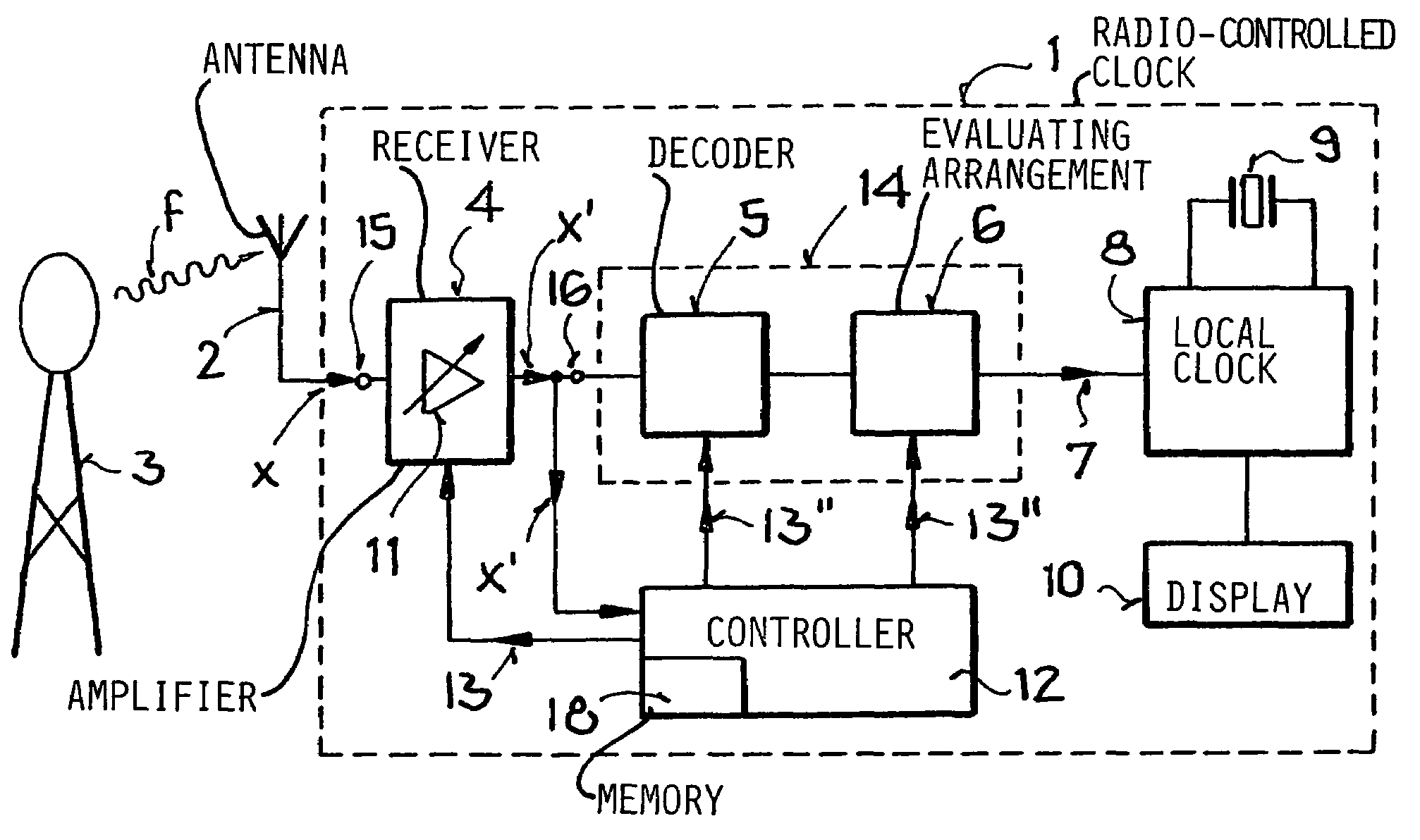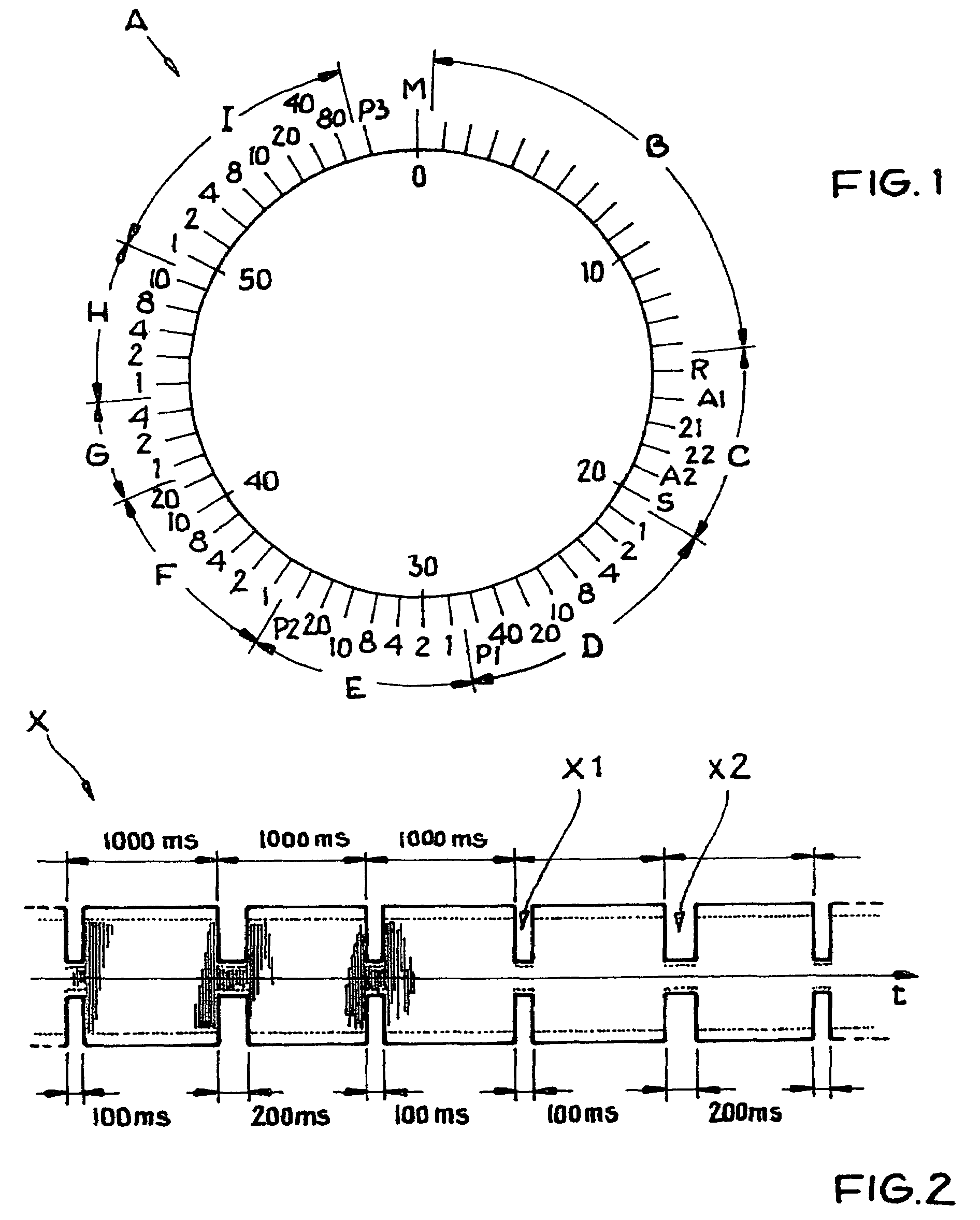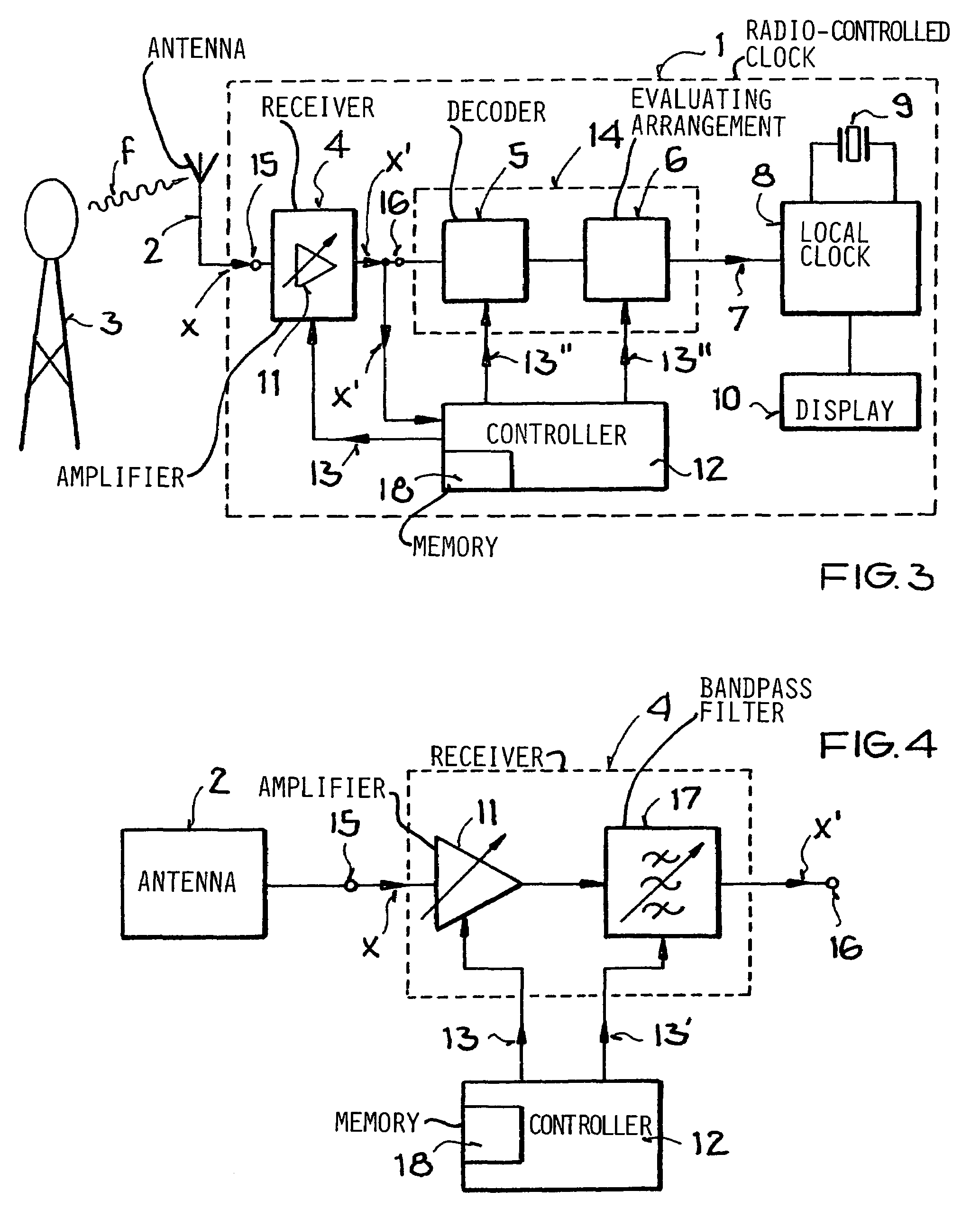Receiver circuit and method using selectively variable amplification for receiving time signals from different transmitters
a time signal and receiver circuit technology, applied in multiplex communication, instruments, horology, etc., can solve the problems of amplification, decoding and subsequent evaluation of time data, and the optimum signal level of the amplified signal output of the amplifier, so as to achieve sufficient accuracy, reliability and security, and ensure the effect of receiving sensitivity
- Summary
- Abstract
- Description
- Claims
- Application Information
AI Technical Summary
Benefits of technology
Problems solved by technology
Method used
Image
Examples
Embodiment Construction
[0056]In all of the drawing figures, the same elements and signals, as well as the elements and signals respectively having the same functions, are identified by the same reference numbers, unless the contrary is indicated.
[0057]The general format of an encoding protocol of a time code telegram A as conventionally known in the time signal transmitted by the official German time signal transmitter DCF-77 has been explained above in the Background Information section. Similarly, the time-variation of the amplitude-modulated time signal is schematically shown in the time diagram of FIG. 2, which has been discussed above as well.
[0058]The block circuit diagram of FIG. 3 illustrates a first variant of a radio-controlled clock with adjustable amplification according to the invention. The radio-controlled clock 1 comprises one or more antennas 2 for receiving a time signal X transmitted by the time signal transmitter 3. The time signal X has a frequency f. The clock 1 further comprises a r...
PUM
 Login to View More
Login to View More Abstract
Description
Claims
Application Information
 Login to View More
Login to View More - R&D
- Intellectual Property
- Life Sciences
- Materials
- Tech Scout
- Unparalleled Data Quality
- Higher Quality Content
- 60% Fewer Hallucinations
Browse by: Latest US Patents, China's latest patents, Technical Efficacy Thesaurus, Application Domain, Technology Topic, Popular Technical Reports.
© 2025 PatSnap. All rights reserved.Legal|Privacy policy|Modern Slavery Act Transparency Statement|Sitemap|About US| Contact US: help@patsnap.com



